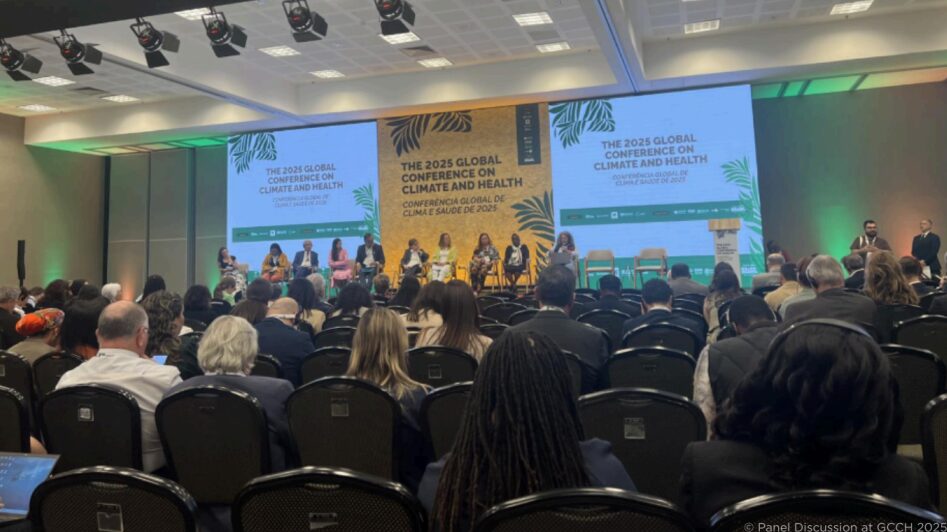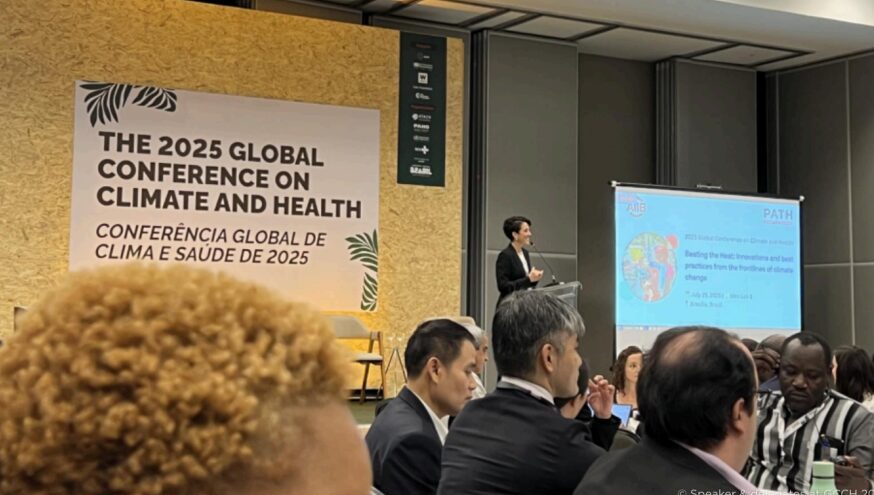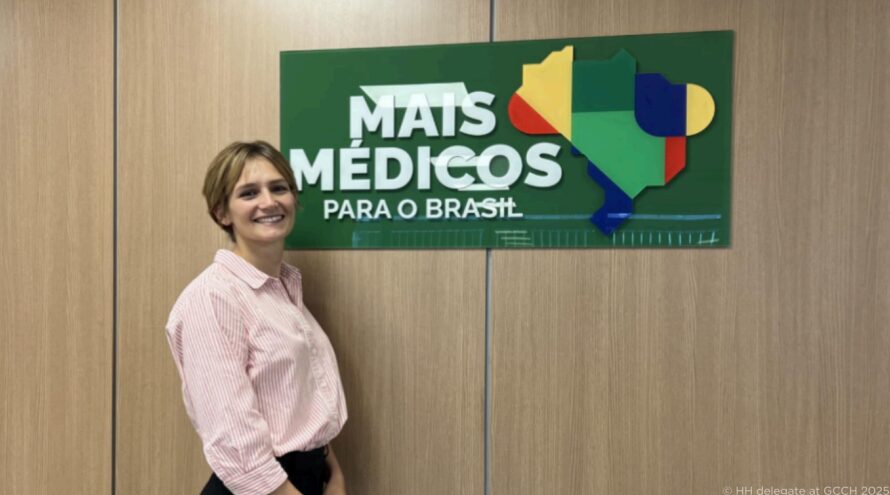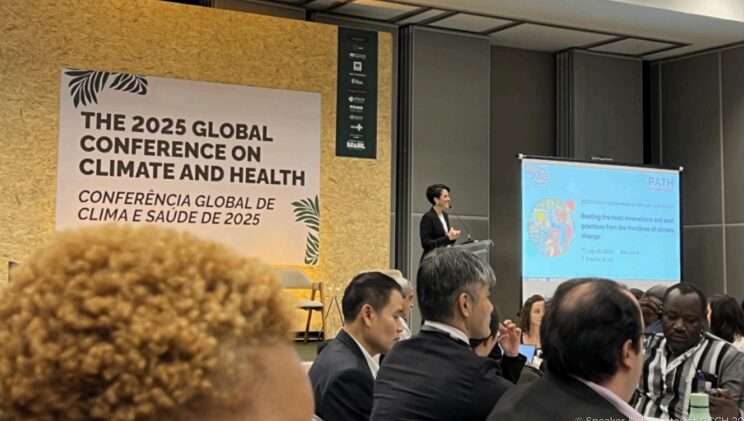Climate Action For Maternal, Newborn and Child Health
It was the hottest October in decades in eastern Zimbabwe, and 27-year-old Tendai had just put to birth. The hospital’s small postnatal ward had no air conditioning, only two fans that barely stirred the air. She noticed her baby’s small fists clench and relax, and the midwife explained it might be the heat. Tendai hadn’t realised heat could threaten her newborn’s health, so she had no plans for it.
Two weeks later, Tendai sat on the floor in her house, fanning her son with a scrap of cardboard. The thermometer nailed to the wall read 45 °C, but the air inside felt hotter. Her son’s skin looked flushed, his breath quicker than usual. Her husband had left at dawn to queue for water at the community pump because the nearest well was almost dry. Tendai began having headaches and dizziness, and at the clinic, the nurses explained she was dehydrated and needed to drink more water, as dehydration was not only dangerous for her but could also affect her breastmilk supply
“For Tendai, climate change was no longer about what she saw on television or the tales of flooding and droughts in other communities; it was here
In her baby’s fevered cheeks, in her sleepless nights, and in the silent hot afternoons where even the goats sought shade under the dry trees.
This fictional story of Tendai’s experience reflects a larger theme discussed at the 2025 Global Symposium on Climate Justice and Impacted Populations and the 2025 Global Conference on Climate and Health in Brasília, Brazil. Delegates from across the world examined strategies for advancing dialogue, policy, and partnerships at the intersection of climate change, health equity, gender equality, and system resilience for vulnerable populations
The Challenge Areas

Challenge 1: Underinvestment in health system resilience
Conference discussions emphasized that climate change is amplifying existing weaknesses in health systems, particularly in resource-limited settings serving impacted populations such as pregnant women, mothers and children. Many maternity wards lack the structural resilience to withstand climate-related challenges such as heatwaves or heavy rains. The Belém Health Action Plan, launched at the conference, offers a framework to integrate health into climate adaptation and financing, with health equity and leadership as central themes.
Challenge 2: Insufficient adaptation action for climate and health
While recognition of the interconnectedness of climate and health is growing, adaptation measures for vulnerable populations remain limited. Adaptation planning often overlooks maternal, newborn, and child health (MNCH). Delegates from HIGH Horizons; Debra Jackson (London School of Hygiene and Tropical Medicine) and Shobna Sawry (WitsRHI) contributed to discussions connecting climate justice to maternal, newborn, child and adolescent health priorities across the Global South. These conversations helped amplify global perspectives on health system resilience and the need for climate-aligned service delivery models.
Challenge 3: Need for practical, scalable adaptation models
Further discussions revealed a pressing need for adaptation interventions that can be both locally relevant and scalable across diverse settings. Current interventions are often fragmented pilot projects, with limited pathways for replication or integration into national health systems. Without evidence-based, co-created and cost-effective interventions that address climate impacts, communities remain dependent on short-term or donor-driven solutions that do not guarantee long-term resilience.

Challenge 4: Financing gaps for climate–health action
A recurring theme at the conferences was the lack of dedicated financing to integrate climate adaptation into health services for low-resource settings. Existing climate finance mechanisms rarely allocate resources for health, and health sector budgets rarely allocate resources for climate preparedness. This funding gap perpetuates a cycle where climate risks to health are acknowledged but not adequately addressed in practice, slowing the progress toward resilient, equitable health outcomes. The conference included bilateral meetings with the Deputy Director of the Department of Health, South Africa, focused on shared regional challenges in heat and health.
Challenge 5: Fragmented policy frameworks and weak cross-sector coordination
Conference speakers and delegates highlighted that policy gaps hinder effective climate–health action, including strong advocacy for the integration into climate policy frameworks of sexual and reproductive health and rights and maternal, newborn and child health, gender-based violence prevention, and feminist approaches. Voices from affected communities were prioritized throughout the conference, with compelling testimony from young people, indigenous leaders, and public health experts across diverse geographies. The absence of clear mandates, policy frameworks, and accountability frameworks means that climate considerations often do not include health themes.
How HIGH Horizons contributes to climate action
Heat indicators for health monitoring systems
There is an urgent need to equip health programmes and national and global monitoring systems with routine heat-health indicators that track the impact of rising temperatures on vulnerable populations. Such indicators would help programmes and countries to understand how heat is impacting key populations and if the actions they are undertaking have an impact. These indicators will also contribute to national preparedness, especially in the context of global warming trends.
Adaptation & mitigation strategies
Adaptation interventions for the health workforce include behavioural adaptations supported through the provision of personal cooling kits, adjusting work schedules, or the employment of a facility-based heat champion responsible for provision of personal cooling items, water, health talks, ventilation checks, monitoring heat stress symptoms, and conducting educational sessions, among other duties. Built environment adaptations include the installation of water filter coolers, application of reflective roof paint and installation of ceiling insulation. Nature-based solutions include planting trees around the health facilities. Mitigation tools like CARBOMICA, the resource allocation tool for carbon mitigation in health facilities, guide health managers to optimize carbon emission reductions by implementing specific mitigation interventions with a limited budget.
Early warning systems
The value of early warning systems that translate climate forecasts into actionable guidance and health tips for vulnerable populations cannot be overemphasized. The MotherHeat Alert App by HIGH Horizons exemplifies this approach by sending timely and personalized alerts to pregnant and postpartum women with advice on heat stress prevention, hydration, infant care, and when to seek medical attention.
Collaboration for integrated mitigation and adaptation interventions
Cross-sector collaboration to scale integrated climate-health interventions was emphasized at the conference. We at HIGH Horizons encourage multisectoral collaboration and local stakeholder involvement to ensure that adaptation measures ensure a holistic response and address contextual needs.

At HIGH Horizons we are integrating climate adaptation and mitigation into maternal, newborn, and child health services and strengthening health system resilience.
Follow us on LinkedIn at HIGHHorizons and visit our blog at highhorizons.eu to learn more about our work and stay updated.
Thanks for reading.



